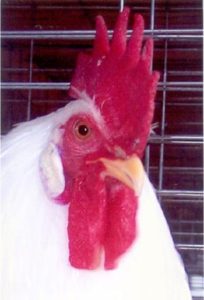Well, maybe not anymore!
Researchers from Britain and the US have identified a genetic mutation that “creates incipient teeth in bird embryos,” according to an article in Science Magazine. Scientists based at the universities of Manchester and Wisconsin discovered a modern day glimpse of a feature that hasn’t been seen in avians for millions of years.
According to scientists birds lost their choppers 70 million to 80 million years ago. But, an experiment in 1980 surprised the researchers following an experiment where oral tissue was grafted from mice onto a chicken’s gums.
Amazingly, the birds grew round, mouse-like teeth. Because birds and mammals are not closely related, scientists doubted whether the experiment 
A team of developmental biologists led by Dr. Harris has since found a strain of birds that can grow teeth on their own. While investigating a gene mutation known to affect organ development in chickens, Harris, working with the Max Planck Institute in Tübingen, Germany, noticed “sharp protrusions on the jaw of a 16-day-old embryo.”
Scientists had never suspected a connection between tooth formation and the gene–known as talpid2–because embryos with the mutation rarely survive past 12 days. Further investigation by Harris and colleague John Fallon at the University of Wisconsin, Madison, indicated that the teeth were conical and saber-shaped, resembling those of an alligator or crocodile.
“The work is a breakthrough,” says Harris, because “for the first time, the teeth created in the chicken are natural rather than imported from another animal.”
“We’ve put bits of mice into chicken and got a mouse tooth,” he says. “The big deal is that we didn’t do anything to this chicken. It was a naturally occurring mutant.”
Professor Mark Ferguson, a member of the team at the University of Manchester, says the “research on reactivation of dormant genetic pathways could ultimately help treat sufferers of scarring, where tissue regeneration is needed.”
“The finding is a great example of how altering the location of gene expression can cause changes in body types over time,” said biologist Scott Gilbert of Swarthmore College near Philadelphia, Pennsylvania. “The real wow here,” adds Paul Sharpe, a biochemist at the Department of Craniofacial Development at Kings College London, “is that these guys essentially show a glimpse of what the teeth probably looked like in the first birds.”
Creation Ministries International pointed to this case as an example of “devolution,” where genetic information has been lost over time, not gained through Darwinism.
This is a compilation of various sources used for reference in this article, including Current Biology, Cell Biology, Science Magazine, National Center for Biotechnology Information Search database (NCBI), Science Daily, and Creation Ministries International.



 RSS - Posts
RSS - Posts